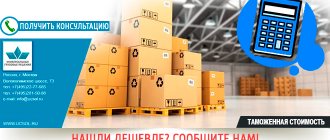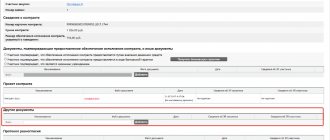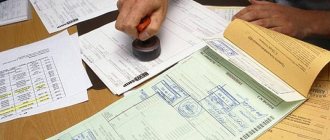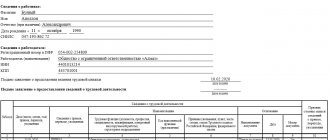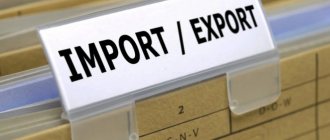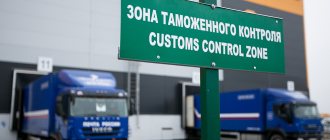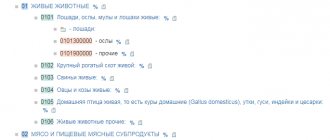Abstracts / Customs system / Risk indicators in the system of control of the customs value of goods
Trading cryptocurrencies fully automatically using crypto signals. First-hand signals from a powerful trading robot and a team of real professional traders with over 7 years of trading experience. Convenient system of instant notifications about new signals in Telegram. Transaction support and individual assistance to everyone. The signals are easy to understand for both beginners and experienced traders. Promotion. For visitors to our website, the first month is absolutely free.
Contact LegionCryptoSupport on telegram
When working out measure 608, OKTS customs officials, when making decisions based on the results of the control, did not make entries in the relevant documents, and did not draw up DST and CTS. A recording with a conclusion based on the results of the documentary control was made only on the referral form. Decisions on customs value reflecting the necessary entries in the relevant documents
documents were carried out by officials of customs posts independently[18].
Chapter 3. Prospects for the use of risk indicators in the customs value control system using the example of DVTU
The purpose of the risk management system, the concept of which was approved by Order of the State Customs Committee of Russia No. 1069 dated September 26, 2003, is to create a modern customs administration system that ensures the implementation of effective customs control with the optimal distribution of customs authorities resources in the most important and priority areas of work to prevent violations of customs legislation RF. In the field of customs value control, this goal is to prevent understatement of customs value, which is the basis for the calculation of customs duties payable to the Federal Budget of the Russian Federation.
Let us give an example of the implementation of RMS elements in the area of control of the customs value of goods in the Far Eastern Customs Administration[19].
The DVTU cost control department and the subordinate functional departments of OKTS customs carry out on a planned basis work related to the implementation of the RMS concept in the area of customs value control. So, in connection with the existing planned indicators for the development of draft risk profiles and incoming tasks from the Federal Customs Service of Russia to carry out verification activities and develop, based on their results, risk profiles OKTS DVTU organized the collection of reliable price information available to subordinate customs authorities for individual goods.
Based on the results of the analysis of information received from customs, it was concluded that in most cases, materials received from customs contain only an analysis of the electronic database of customs declarations issued in the area of responsibility of the customs authority, and only with rare exceptions did customs provide separate price materials: reference books, commodity certificates, contracts, export declarations. This result is primarily due to the fact that the direction of customs value control is a complex and very contradictory complex. During its operation, it is necessary to maintain a balance of interests in maintaining the legality of decisions made and achieving established cost benchmarks, since failure to comply with the first is “punished” by the prosecutor’s office and judicial authorities, and for failure to achieve the latter, the higher customs authority that set the benchmark is “questioned.”
It has been established that another reason for the shortage of primary price information accumulated within the RMS is the fact that the collection of price information is not properly organized at the level of customs and customs posts. This situation has developed in the region’s customs even though price information is needed by the customs themselves to resolve the following issues:
1) development of new “cost” risk profiles;
2) updating existing risk profiles in order to adequately reflect the current situation regarding the real cost of goods and thereby reduce the controlling pressure of the higher customs authority to fulfill clearly inflated cost indicators that do not reflect the current regional specifics.
Thus, the result is that customs authorities are not making efforts to change the current negative situation of low rates of collecting price information.
It becomes clear that it is impossible to complete the first task, which launches the entire further RMS process, using the functional departments of the customs department alone. This is due to the fact that in a very short time it is impossible for one OKTS department to look through all the issued customs declarations in order to find reliable price information without damaging the core business.
However, it is clear that without the availability of primary information it is impossible to carry out all subsequent stages provided for by the RMS, namely analysis of available information, identification of risks, development or updating of risk profiles.
The model for implementing the RMS in the area of customs value control is associated with the following objective prerequisites for the functioning of the hierarchical system of customs authorities. Officials at customs posts at the customs clearance stage have almost all available price information (usually with the exception of payment documents for deferred payments under the contract). Additionally, in accordance with their job responsibilities, the inspection staff of the General Transport and Technical Control Department must analyze the submitted documents in order to make a lawful decision on the customs value for each customs declaration.
Based on this provision, it is proposed to organize on an ongoing basis a complete accounting at the level of the customs post of all conditionally reliable price information at its disposal on the cost of goods and the formation of a database based on it. At the main stage of documentary customs clearance and customs control, the customs post official may decide on the reliability of the documents containing price information and presented in the customs clearance package with the customs declaration; however, there is a possibility that when re-checking the information declared in the customs declaration, the fact of unreliability of the price information will be established information. Therefore, only if the condition of successfully passing a repeated comprehensive check is met, price information can be considered reliable, and until this point its reliability can be questioned.
In order to form the most reliable database of information at the level of customs posts, it is necessary to exclude cases of unjustified inclusion in the database of an array of all price information without a primary target filter. Such a filter should be signs of the reliability of price information, and the management impact should be the development, implementation and control of the use of criteria for selecting such information.
To date, the Federal Customs Service of Russia has not developed criteria for classifying documents and the information contained in them as reliable information. Therefore, this issue remains hidden, but requires an early solution. The primary criteria for selecting conditionally reliable price information should be the following groups of characteristics.
1. Signs of the status of a document containing price information. For example, price lists of manufacturing plants, made on letterhead with a sufficient number of details, stock quotes, market reviews of individual goods by world-famous independent consulting companies, export declarations of countries sending goods, contracts and specifications that satisfy a number of conditions, for example, those given in letter of the Federal Customs Service of Russia No. 01-06/30338 dsp dated August 31, 2006 “On the application of risk profiles.”
Page: 8
Customs clearance in Vladivostok
We provide services for profitable, fast and reliable delivery of imported goods from Asian countries, as well as registration and delivery of export cargo with full customs clearance in Vladivostok. We are always ready to solve all your problems regarding customs clearance and cargo delivery . Our many years of experience in the field of customs clearance of goods in Vladivostok allows us to solve all the assigned tasks.
We value our clients and work to meet their needs for quality services. Our goal is to achieve excellence in the field of customs clearance and cargo transportation, improving the quality of services provided.
Our tariffs are significantly lower than those of similar companies, while the quality of the services provided meets modern logistics requirements. We are guaranteed to deliver your cargo to any city in Russia .
As of June 2021, we have delivered more than 2,857 containers and groupage cargo to our customers and processed more than 2,198 customs declarations with customs.
We provide the following services
The following online services are available to you on the website:
Save time, effort and money - entrust us with taking care of your cargo.
With us, your business is moving in the right direction.
Source
Customs risks, information
On September 13, 2013, the Federal Customs Service of Russia introduced a new risk “Country of departure or loading Lithuania”.
As a result, since September 13, customs clearance of goods from Lithuania has practically stopped.
Risk minimization measures - 100% customs inspection with weighing, photography and sampling to determine the country of origin.
To a greater extent, this risk affected cargo from the EU and other countries in transit through Lithuanian customs terminals, where new documents for import into the Russian Federation are issued. It is there that TIR and CMR are issued, where the country of departure (loading) Lithuania is indicated.
To confirm that the loading and shipment did not actually take place in Lithuania, foreign trade participants present the original shipping documents during customs clearance.
The risk is valid until September 23, 2013.
And here is the next step. Russia introduced a “risk profile” for Lithuania, and then introduced a “risk profile” for the entire Baltic states and Poland. Lithuania has already handed the ambassador a note of protest, but this will not help much - such decisions are not made just like that. And if Russia has introduced such restrictive measures, it means that it has confidence that if it does not completely discourage the desire to lower customs payments, then it is at least able to fight for some time and not remove the “risk profile”. And for transit countries this is a disaster. Freight forwarding companies in the Baltics and Poland are already having a hard time staying afloat, having burned their savings in Cyprus and in the bankrupt banks of their countries, and now there’s this surprise. In a crisis, without savings, to hold out with Russian protective measures for a month..... I do not undertake to make predictions, but if transit revenues are removed from the economies of states that are already on the verge of a crisis, it will be, to put it mildly, very sad for them.
And then, in mid-November, we will face the next step in closing the borders of the customs union - this is the end of the transition period to the technical regulations of the Customs Union. Moreover, this is no longer a transition from one piece of paper to another. During the transition period, unscrupulous certification organizations were cleaned up, expert laboratories were prepared, and in November, the majority of goods imported into the territory of the Customs Union will have to undergo a real expert assessment. But it only seems that luxurious European standards are much better than Russian ones - they are just different. In Turkey, for example, brochures are published for farmers, which describe at what time, with what fertilizers and in what quantities vegetables and fruits can be fertilized so that they can be exported to Russia. The CU has much more stringent requirements for electrical goods than the EU, especially for industrial equipment. And there are a lot of different small discrepancies that take a long time and are difficult to eliminate in order to be able to sell your goods to Russia.
Risk minimization measures include:
633 CUSTOMS INSPECTION OF GOODS, INTERNATIONAL VEHICLES AND CONTAINERS USING INSPECTION AND INSPECTION COMPLEXES
109 CUSTOMS INSPECTION OF GOODS
204 SAMPLING AND SAMPLES OF GOODS
601 CUSTOMS EXAMINATION OF GOODS
615 REQUEST FOR ADDITIONAL DOCUMENTS AND INFORMATION FOR THE PURPOSE OF VERIFYING THE INFORMATION CONTAINED IN CUSTOMS DOCUMENTS
623 RELEASE OF GOODS IS CARRIED OUT IN APPROVAL WITH THE HEAD OF THE CUSTOMS POST after release
639 IMPOSING A REQUIREMENT FOR THE DECLARANT TO PROVIDE ORIGINAL DOCUMENTS CONFIRMING THE INFORMATION STATED IN THE DECLARATION FOR GOODS ON PAPER (WHEN DECLARING GOODS IN ELECTRONIC FORM)
In this case, customs inspection is carried out in the amount of 100% of all consignments of goods.
Request for documents and explanations
The inspector begins import control with a thorough reconciliation of the data in the declaration and the documents accompanying it. Any inconsistency in the data or lack of information about the product leads to a request. This may be an invoice that has not been translated into Russian, or a lack of accurate information about the distribution of transportation costs. The inspector then requests translated documents and an explanation of how transportation costs are allocated to the goods in the shipment.
Or the importer has provided little information about the product, there is no technical description - then they will ask for more information so that there is a justification for using the HS code, which is indicated in the declaration.
Import requires a large package of documents for customs clearance. Therefore, the verification takes longer and requires additional requests.
Sign up with Avangard Direct to entrust communication with customs to professionals.
Press: what are foreign trade participants afraid of?
Passing customs without problems and releasing the cargo as quickly as possible is the main goal of foreign trade participants and companies working in the customs area. But reality does not always correspond to expectations, and instead of the desired release, cargo goes through inspections, weighings and other procedures from which no one is immune, because there are as many as 72 measures to minimize the risks that may arise when filing a declaration, and moreover, for one Several of them may appear in the declaration at once.
All possible control measures cost even the most conscientious foreign trade participant a pretty penny, since they incur unnecessary financial and time costs for him. PROVED found out from an employee of one of the customs representatives working with the Baltic customs what happens when a measure “falls out”, and what costs arise for participants in foreign trade activities.
How long does it usually take for cargo to be released?
If the measure does not fall out, then the cargo is usually released on the same day. If the declaration was submitted in the morning, then the cargo is released in the evening, and if the declaration was submitted in the evening, then the cargo will be released the next morning. If the measure falls out, then the cargo may take longer to release.
How often do customs control measures work?
Specifically for our activities, on average measures are taken for every fourth or fifth declaration. Sometimes it happens more often. As a rule, it all depends on which companies are processing the customs representative and what cargo they specialize in. So, for example, if a customs representative mainly cooperates with companies included in the “green sector”, measures will be taken much less frequently.
Which control measures work most often?
Very often all measures work for Turkish goods. It was officially announced that they were canceled, but they continue to work.
How does customs inspection take place using the IDK?
If the ICD measure is taken, it is impossible to issue a declaration before the cargo goes through this procedure. At each customs terminal, the implementation of the measure occurs differently. Some terminals have stationary IDKs, while others have mobile IDKs. As a rule, if there is a stationary IDK, then the implementation of the measure occurs relatively quickly. On average, it takes one or at most two days to complete, partly due to the bureaucracy in the process.
The procedure itself goes like this: the customs inspector writes a memo, then signs it with the boss, and then sends the document to the port where the container is located. After this, the container is placed on the site for inspection and inspection, where the cargo is scanned with x-rays. Further, if nothing is found on the x-ray, the issuing inspector is sent the results of the IDK, and the measure is considered completed. If the X-ray reveals something suspicious, the cargo is sent for customs inspection.
What if there is no stationary IDK at the terminal?
If there is no stationary IDK at the port, then a mobile IDK is used. Typically it moves between different terminals. He usually comes to the port a couple of times a week, depending on the workload of the posts. For example, in the port of Bronka there is no stationary IDK, and the MIDK arrives there twice a week. Because of this, the time for processing the measure increases to four days.
Due to such a delay in customs clearance and the limited period of free stay of the cargo at the terminal, the cargo for which this measure was triggered may be subject to delays at the port. And these are additional costs. Amounts can vary greatly depending on the volume and nature of the cargo, the deadline for free storage and the price level at the terminal.
What happens if the inspection measure works?
Customs inspection is one of the least favorite measures for foreign trade participants. If the container does not need to be opened during inspection using the IDK, then the container will definitely have to be opened to pass the inspection. This measure works quite often, especially when the cargo is sold at a price below the risk level.
The cargo is submitted for customs inspection the next day after this measure is triggered. Customs inspection times can vary greatly depending on the nature of the cargo and its volume. Often, if one container with the same type of cargo is traveling, the inspection is done within one day. But it can take longer. There was a case when the cargo was not released for 14 days. It was a very large consignment with goods of different names, which were transported under different HS codes, and they were scattered in the container at random.
Especially often, such problems are faced by those who cram many containers into one declaration. After all, in this case, the entire cargo falls on downtime and additional costs. It is much more convenient not to save on fees and submit more declarations.
What costs do foreign trade participants incur during customs inspection?
As with the IDK, there is a possibility of downtime, and if the inspection takes longer, you may have to pay, because The free temporary storage period will expire. If any manipulations occur with the container - it is put up for inspection, inspection or weighing - then the terminal takes money for this. This is called terminal expenses. Prices may vary, but on average 15-20 thousand rubles per container. In fact, the larger the shipment, the greater the associated costs. In addition, if a large consignment of goods is traveling, it is quite possible that the foreign trade participant will also pay extra to the dockers so that the cargo can be unloaded faster during inspection.
Baltic Customs (10216000)
ODO (Documentation Support Department) of the Baltic Customs:
Department head
incoming correspondence: 640-37-92, 640-53-03, 640-58-06, 640-58-62
outgoing correspondence: 640-37-81, 640-53-06, 640-58-39, 640-53-04
OTNIPT (Department of Commodity Nomenclature and Origin of Goods) of the Baltic Customs:
Department head
Department telephones: 640-58-11, 640-58-36, 640-58-47, 640-37-83
OTP and TC (Department of Customs Procedures and Customs Control) of the Baltic Customs:
Head of department: 640-37-30
Department telephones: 640-53-70, 640-58-21
OTP (Customs Payments Department) of the Baltic Customs:
Head of department: 640-37-50
Deputy chiefs: 640-37-62, 640-58-59
Department telephones: 640-53-63, 640-37-15, 640-58-50, 640-37-65
OTOiEK (Department of Trade Restrictions and Export Controls) of the Baltic Customs:
Head of department: 640-37-51
Department telephones: 640-53-85, 640-58-02, 640-58-00, 640-53-31
OTS (Customs Statistics Department) of the Baltic Customs:
Head of department: 640-37-53
Department telephones: 640-37-11, 640-37-10, 640-53-76
OVK (Currency Control Department) of the Baltic Customs:
Head of department: 640-53-39
Department telephones: 640-37-44, 640-58-52, 640-53-75
OPSUR (Risk Management System Application Department) of the Baltic Customs:
Head of department: 640-37-06
ZDeputy Head of Department: 640-58-73
Department telephones: 640-37-78, 640-53-09, 640-58-71
